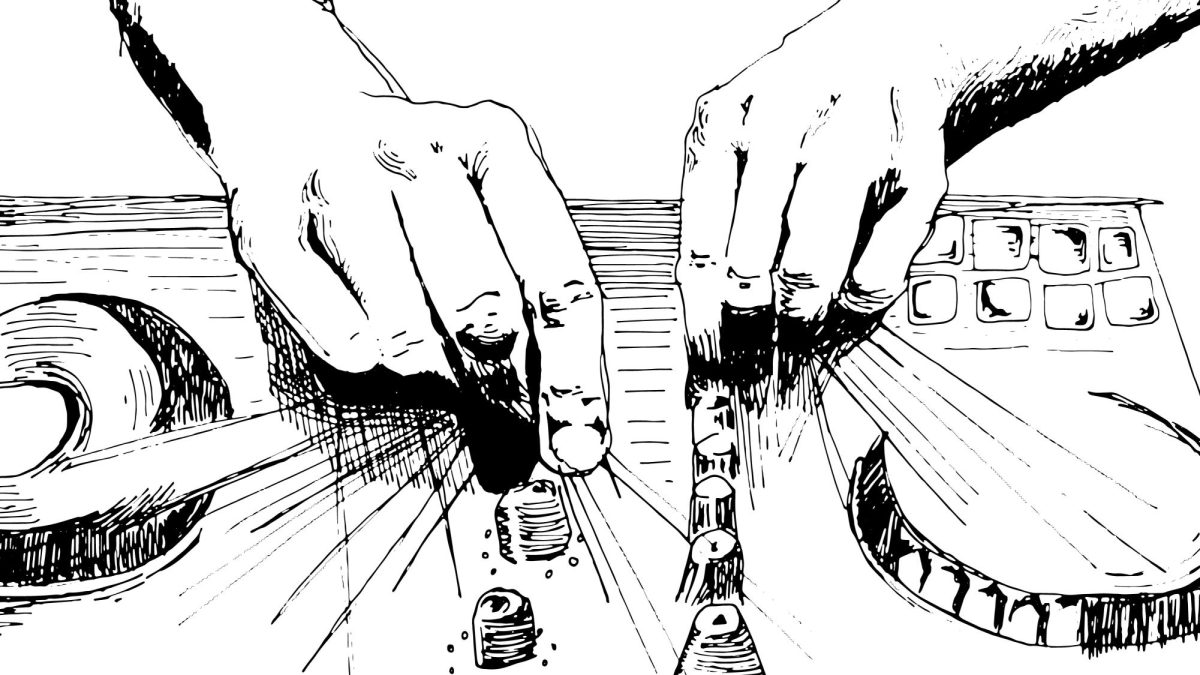
The Clark Museum of Art has long been home to an impressive collection of Impressionist painters and American greats like George Inness and John Singer Sargeant. But as of June 10, the museum has opened its doors to the father of the Expressionist movement, Edvard Munch. I was excited to experience other works of the painter behind one of Western art’s most recognizable images, The Scream, and expand my understanding of his inspiration.
Trembling Earth, the first Munch exhibit of its kind in the United States, is located on the lower level of the Clark. Visitors are first greeted by a bold blue wall, setting the stage for a vibrant and lively exhibit that goes beyond Munch’s tortured and anxious persona. The entrance to the exhibit quotes Munch reflecting on his difficult upbringing and battle with alcoholism. “Sickness, insanity, and death were the black angels that guarded my cradle,” Munch wrote shortly after his 70th birthday. The exhibit posits how Munch found solace and meaning among Norway’s natural landscapes, presenting a country on the precipice of industrialization in his paintings.
Here in Williamstown, a town marked by its rural identity, Trembling Earth serves the role as a counterpoint to a regional narrative. I found it provides a look into the inevitability of change and how no matter how hard one tries, the Earth will continue to tremble as it is faced with the future.
The ensuing six sections that make up Trembling Earth are a refreshing look at Munch’s lifeworks, a collection full of abundance, life, and energy. The first section, “In the Forest,” is a whimsical look at some of Norway’s most stunning landscapes. The Fairytale Forest presents two children meandering through a sweeping expanse of trees, the branches marked against a soft purple sky. It serves as one of many examples of Munch’s focus on the ever-evolving relationship between humanity and nature, the children’s innocent foray serving as a celebration of Norway’s natural beauty.
Two later sections of the exhibit, “Cultivated Landscape” and “Storm and Snow,” depict the seasons and reflect Munch’s fascination with metamorphosis and cyclic renewal. These two sections present an ever-changing Norway, made visible in blue-toned snowscapes and swirling pink and yellow farm scenes. One painting titled Fertility serves as a representation of the interconnectedness of the Earth and all living things. It is evocative of the Garden of Eden, man and woman in nature and on the precipice of change.
The next section, “On the Shore,” delves into the metaphysical, pondering what Munch called “the perpetually shifting lines of life.” Munch viewed the shore as a symbol of the forces of separation and attraction at odds with each other, of push and pull. The woodcut Two Women on the Shore presents an elderly woman and her younger counterpart looking out across the shore, with the pair symbolizing life and death. This presentation of mortality in the human form furthers Munch’s argument present throughout Trembling Earth: Nature and humanity are continuously connected.
This theme is further explored in “Cycles of Nature” and “Chosen Places,” leaving the viewer to ponder Munch’s coupling of the natural and unnatural. In The Human Being and Its Three Power Centers, “jordsvininger” is written on the canvas in black crayon. It is Norwegian for “trembling earth,” at once an admission of nature and humanity’s unrest.
I realized throughout the exhibit that the focal point of Munch’s work was never his own anxiety, but that of the world itself. The Scream, though certainly present in glimpses through The Storm and an eponymous lithograph, is only ever that — a glimpse of Munch’s multifaceted capacity as an artist. Trembling Earth is a study of the world’s continual change and unrest, a snapshot of one nation left to contend with the doomed fate of constancy.







